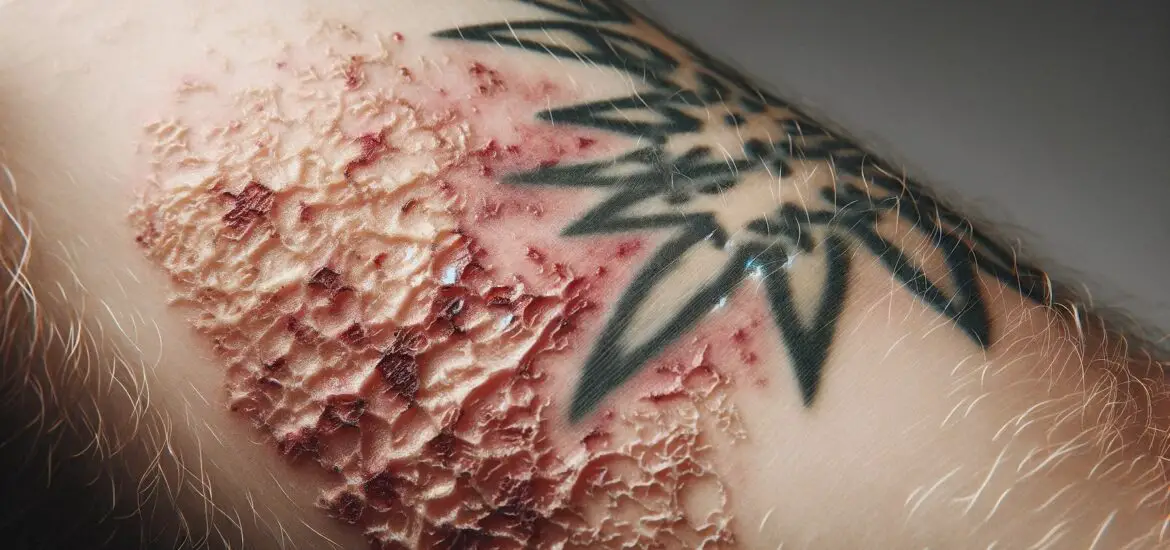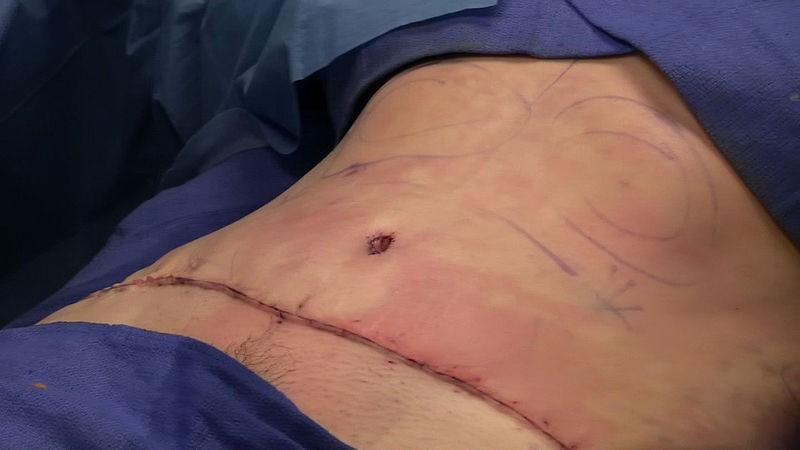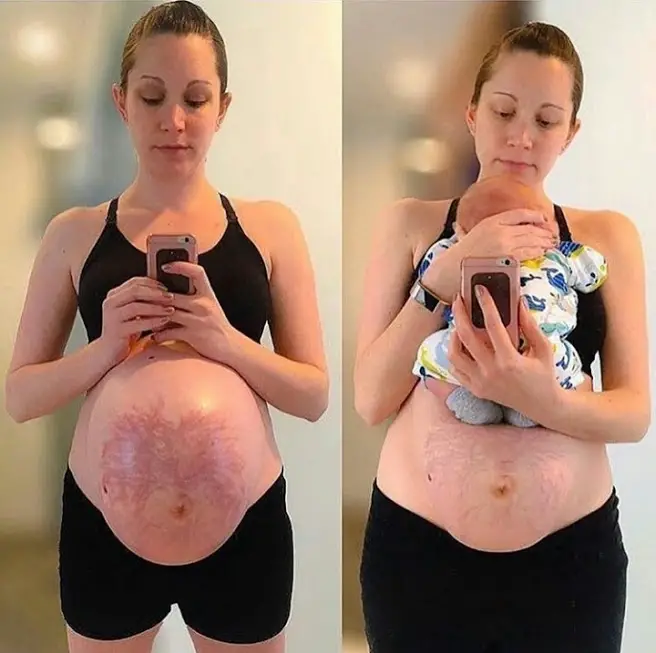This article provides a comprehensive guide to skin healing after laser tattoo removal to help you navigate the journey of recovery and ensure optimal healing of your skin.

Table of Contents
Understanding Laser Tattoo Removal and Skin Healing
Laser tattoo removal involves using high-energy light to break down the ink particles in your tattoo. Different types of lasers are used, depending on the tattoo’s ink colors. For instance, Q-switched lasers are commonly used and are particularly effective for darker inks.
The energy from the laser heats up the ink particles, shattering them into smaller fragments. Your body’s immune system then gradually flushes these particles out, fading the tattoo over time.
Understanding the healing process is crucial, as it involves skin regeneration and repair. The process includes an initial inflammatory response where the body sends white blood cells to the area to start healing. This is followed by the creation of new skin cells to replace the damaged ones.
The complete healing process can take several weeks to months and varies from person to person, depending on factors like skin type, tattoo size, and overall health.
Preparing Your Skin for Laser Tattoo Removal
Proper preparation can significantly impact the effectiveness of laser tattoo removal and the ease of the healing process.
Before your appointment, it’s important to avoid any skin irritants or activities that might compromise your skin’s health. This includes avoiding sun tanning, tanning beds, and self-tanning products for at least 4-6 weeks before treatment, as tanned skin can increase the risk of side effects like blistering and pigmentation changes.
Furthermore, stop using any skincare products that contain retinoids or glycolic acid a week before the procedure, as these can sensitize the skin. On the day of the treatment, make sure the tattoo area is clean, dry, and free of any lotions, perfumes, or makeup.
Inform your specialist of any skin conditions or allergies, as well as any medications you’re taking, as these can affect your treatment and healing.
Process of Skin Healing After Laser Tattoo Removal
Immediately following your laser tattoo removal session, it’s common to experience redness, swelling, and a sensation similar to a sunburn. Blisters may form within 24-48 hours, which is a normal reaction as your skin responds to the intense heat from the laser. In the days following the procedure, these symptoms should gradually subside.
The treated area may then form a crust or scab, which is a critical part of the healing process, as it protects the underlying skin as it heals. It’s essential to let these scabs fall off naturally to prevent scarring.
You might also notice that the tattoo appears lighter or patchy as the ink fragments are absorbed by your body. This process is gradual, and multiple sessions are often required to achieve full removal, with healing periods in between.
Post-Treatment Care for Optimal Healing
Post-treatment care is crucial for a smooth recovery and optimal results. After the procedure, keep the treated area clean and dry. Gently wash the area with mild soap and water, then pat it dry with a clean towel.
Apply an antibiotic ointment to prevent infection and cover with a sterile bandage. It’s important to change the bandage daily and apply a new layer of ointment each time.
Avoid activities that can cause excessive sweating, like strenuous exercise, for a few days post-treatment. In addition, avoid swimming, soaking in a bathtub, or using hot tubs until the area is fully healed.
Keep the treated area out of direct sunlight for at least a month post-treatment, as UV exposure can lead to hyperpigmentation and affect the healing process. If you must be in the sun, use a strong, broad-spectrum sunscreen like this Cetaphil Sheer Mineral Sunscreen Lotion to protect the area.
Check out these other articles…
Dry Skin After Laser Tattoo Removal: Essential Care Tips
Skin Discoloration After Laser Tattoo Removal: Easy Guide
How Does Skin Look After Laser Tattoo Removal: Easy Guide
Dark Skin After Laser Tattoo Removal: Easy Care Guide
What Happens to the Skin After Laser Tattoo Removal?
Managing Pain and Discomfort
After laser tattoo removal, it’s common to experience some pain and discomfort. This can usually be managed with over-the-counter pain relief medication, like acetaminophen or ibuprofen.
Applying cool compresses (not ice) to the area can also provide relief from pain and swelling. Make sure to wrap the compress in a clean cloth to avoid direct contact with the skin.
Avoid scratching or picking at the treated area, as this can increase the risk of infection and scarring. If you experience significant pain, blistering, or any signs of an allergic reaction, contact your healthcare provider for advice.
Recognizing When to Seek Medical Attention
While most side effects of laser tattoo removal are temporary and manageable, some symptoms may indicate a need for medical attention. These include signs of infection like excessive redness, swelling, warmth, pus, or fever.
Persistent pain, particularly pain that doesn’t respond to over-the-counter medication, should also be a cause for concern. Excessive bleeding, unusual skin reactions, or severe blistering are other signs that you should contact your healthcare provider.
It’s important to monitor the healing process and report any unusual or severe symptoms to your provider as soon as possible.

